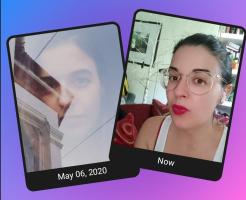Copy Link
Add to Bookmark
Report
Current Cities Volume 06 Number 02

_Current Cites_
Volume 6, no. 2
February 1995
Information Systems Instruction & Support
The Library
University of California, Berkeley
Edited by Teri Andrews Rinne
ISSN: 1060-2356
Contributors:
John Ober, Margaret Phillips, David Rez
Richard Rinehart, Teri Rinne, Roy Tennant
Electronic Publishing
Bower, Richard A. "The Resource Directory: Courting Legal
Resources for CD-ROM and Multimedia" CD-ROM Professional
8(2) (February 1995):111-117. -- Bowers contends that
although the brave new world of new media has made
substantial advances in the last ten years, the legal
infrastructure has not followed suit. In spite of mount-
ing pressure to establish guidelines for the National
Information Infrastructure and for multimedia licensing
and publishing, lawmakers have been uncommonly unproduct-
ive. Although the publishing industry generally loves
ambiguous situations (because every twist and turn is new
fodder for yet another book or newsletter), there has
been a dearth of legal resources to help guide them
through new media ventures until just recently. After
eloquently setting the scene, Bower provides an extensive
bibliography accompanied by short abstracts encompassing
newsletters, serials, books, Internet sites, audiotapes
and looseleaf services designed to guide the electronic
publisher through uncharted legal territory. -- TR
"Novell Offers Internet Access and Publishing for End-users"
[URL:http://www.novell.com:80/wp/busapps/epub] -- Novell,
the new owner of WordPerfect, announced that WordPerfect 6.1
will be capable of creating HTML documents. HTML is used to
present information on the World-Wide Web. With the free
add-on, the Internet Publisher, users can use WordPerfect to
create HTML documents without learning a great deal about the
specifics of HTML as they are guided through the process. Even
better, Novell is offering a WordPerfect SGML edition, for
marking up SGML documents. If these products work as easily as
it sounds, or even more easily then competing products, it
could be of great benefit to institutions without the resources
to buy the often expensive hardware and software associated
with creating SGML documents, and converting them to HTML for
delivery on the WWW. SGML is an emerging standard for much
museum, archive, and library full-text information, but until
recently this 'standard' has been hard to implement because of
the high costs. There are still pieces missing, such as the
SGML database for housing these documents and providing
cross-document searching, but integrating the authoring tools
into a popular word-processor is a leap toward making the
technology more accessible. -- RR
Multimedia and Hypermedia
Langberg, Mike. "Multimedia Enrolls in School" San Jose Mercury
News (February 10, 1995):1F-2F. (San Jose Mercury News is also
available at [URL:http://www.sjmercury.com]). -- TCI and
Reuters, the cable and news giants have joined together to form
a third company, Ingenius. Ingenius delivers multimedia
educational services to schools via TV cable connections. The
cost to the school is a $70 adapter, a Mac or Windows computer,
and $100 per year. Then every weekday Ingenius delivers six
programs over the cable to the classroom computer at a rate of
about 9600bps. The programs range from Egyptology to Biology.
The service is affordable, but faces the problem of having
enough content to deliver. This new delivery system offers
interesting opportunities to the enterprising university or
museum educational department. -- RR
Ozer, Jan. "Indeo and MPEG gird for the next big battle" CD-ROM
Professional 8(2) (February 1995):56-64. -- Although standards
battles drive everyone crazy, this article presents a handy
guide to the issues around video standards, centering on the
battle between Intel's Indeo and MPEG. It touches on hardware
vs. software solutions, quality vs. sheer market push (read:
Betamax), and other technical and business issues which
influence which standard will become the leader. Interestingly,
the first built-in video standard, and the one running on most
machines used in CD-ROM development, Apple's Quicktime, is not
mentioned. It would have been interesting to see comment on
Apple's recent litigation against Intel over video code in
light of these other wranglings. All in all, an informative
look at this important area of multimedia technology. -- RR
Weiss, Jiri. "Multimedia Hits the Streets" New Media 5(2)
(February 1995):44-49. -- Anyone developing public
information systems will be presented with the problem
of on-site delivery at some point. This article will help
them. It covers the various available technologies and
issues around creating public multimedia computer kiosks.
One solution to on-site presentation of course is just to
put a computer or two in a gallery or lobby and let the
user access the information from it. However kiosks can
add value in several ways: for the public who are not
comfortable with computer mice and keyboards, and carry
work associations with seeing computers, kiosks can draw
them in where a Windows-sprouting PC will not. Kiosks can
also guard against vandalism or theft of fragile computer
components, not to mention creating a professional shine
for the institution's public face. This article is very
useful in that it contains discussion of the human as
well as tech issues, case studies, reviews of the options,
costs, and rows of vendor contacts. -- RR
Networks and Networking
Abernathy, Joe. "The Internet [How to Get There from Here]"
PC World 13(1) (January 1995):130-148. -- Cover stories
about Internet access seem to be the late-winter theme in
the computer press. PC World's offering is nicely done,
with summaries of the four primary access methods (gateways
through online services, shell accounts, SLIP/PPP accounts,
and direct). Summary charts and comparison tables allow the
differences in cost, functionality, and setup complexity
among the four to be easily grasped. This article may not
remain accurate in the fast-changing, highly competitive
access market, but it is a boon for those trying to grasp
or explain the current options. -- JLO
Ayer, Rick and Robin Raskin. "The Changing Face of On-Line"
PC Magazine 14(4) (February 21, 1995):108-175. -- Online
services such as Compuserv, Prodigy, America Online, and
Delphi have been offering access to electronic information
for years. Most of them are now offering some sort of
Internet access as well. In this article, and its sidebar
"Routes to the Net" (p. 166), the current resources, prices,
access methods, strengths, and weaknesses of each service
are reviewed. While the information about Internet
connectivity is bound to change quickly, the article will
still be valuable for its clear comparisons. The
introduction to Internet provision complements as much as
overlaps the information in the PC World article mentioned
above. -- JLO
Kelly, Brian. "Running a WWW Service." Last updated January
23, 1995. Available via a World-Wide Web client at any of
the following:
http://info.mcc.ac.uk/CGU/SIMA/handbook/handbook.html
http://scholar2.lib.vt.edu/handbook/handbook.html
http://www.hcc.hawaii.edu/handbook/handbook.html
http://www.cc.gatech.edu/cns/handbook
http://www.arnes.si/books/www-handbook
http://www.ub2.lu.se/kelly/handbook.html
-- Kelly's self-described "handbook" is an impressive
collection of descriptions and hypertext links which cover
a lot of the ground necessary in considering the provision
of World-Wide Web resources. It serves as a one-stop online
reference center for much of the information that is on the
Web itself, documenting both the technical and the procedural
aspects of becoming a World-Wide Web "presence." Information
on the technical side, such as descriptions and references
about HTML or Web server utilities, is fairly deep.
Organizational and social issues, such as "Legal and Ethical
Issues" or "Libraries and the WWW" are treated more thinly,
but those sections are still good starting discussions. In an
ironically refreshing criticism, given that it is usually
leveled at material that originates in the USA, Kelly's
handbook does draw examples primarily from the UK, from where
he writes and works. -- JLO
Cohen-Williams, Anita and Julia A. Hendon. "Internet Resources
for Anthropology" College & Research Libraries News 56(2)
(February 1995):87-90, 113. -- Another in the regular C&RL News
feature on Internet resources by discipline, this article focuses
on sources in anthropology as both a discipline and a profession.
Included are lists of electronic discussion groups, gopher and
World Wide Web sites, WAIS databases and other information sources
available online. -- MP
Maxwell, Bruce. _How to Access the Government's Electronic Bulletin
Boards_ Washington, D.C.: Congressional Quarterly, Inc. 1995. --
This book provides detailed descriptions of approximately 200 free,
public-access electronic bulletin board systems (BBSs) operated by
federal agencies and departments. Electronic bulletin boards
operated by the federal government provide access to a wide range
of information such as lists of federal job opportunities, staff
directories for particular agencies, and documents like the full
text of the Americans with Disabilities Act or congressional
testimony on the National Information Infrastructure. A layperson's
guide, this book describes how to reach these BBSs, what they
offer, and how to navigate through them. Particularly helpful is
the introduction which provides background information in simple,
practical terms about what one needs to connect to electronic
bulletin boards in terms of hardware and software, in addition to
a basic introduction to menu commands and solutions to common
problems. A follow-up book, _How to Access the Federal Government
on the Internet_ will be published in spring 1995.-- MP
Optical Disc Technology
Lucarini, Dan. "CD-ROM COLD is Hot" CD-ROM Professional 8(2)
(February 1995):73-77. -- COLD (Computer Output to Laser Disc)
technology is an alternative to using paper, microfiche or
tape to capture and store massive amounts of data. Once page
output is stored to the write-protected COLD system, it can
be retrieved, viewed, faxed, or electronically distributed to
workstations. The benefits of COLD enable companies to
eliminate paperwaste and redundancy, save on distribution
costs, and conduct archival research much faster and with
more accuracy than paper, microfiche, or magnetic tape.
Despite its many advantages, it has been only recently that
COLD has gained in popularity due in large part to the advent
of CD-Recordable (CD-R) technology as a viable platform.
Lucarini outlines why the pairing of COLD and CD-R is such
a promising one. -- TR
Pahwa, Ash. "CD-R Media Incompatibility" CD-ROM Professional
8(2) (February 1995):85-86. -- Pahwa explains the CD-R media
incompatibility problems clearly and succinctly. Three hard-
ware components comprise every recordable technology: writer,
reader and media. In the case of CD-R, when using brand 'A'
media on a brand 'B' recorder, the resulting disc won't work
on a brand 'C' reader. Pahwa calls for the development of
adequate testing studies and wide dissemination of results
to remedy the situation. -- TR
Parker, Dana J. "The Gold Standard" CD-ROM Professional 8(2)
(February 1995):69-71. -- Parker also laments the lack of
CD-R interoperability in the pages of this month's issue of
CD-ROM Professional. CD-R technology is in its infancy and
it is going to have to do some growing up very quickly to
keep pace with its increasing acceptance. However, despite
its drawbacks, Parker views CD-R technology as a viable
platform for large capacity data archiving and software
distribution. -- TR
-------------------------------------------------------------------
Current Cites 6(2) (February 1995) ISSN: 1060-2356
Copyright (C) 1995 by the Library, University of
California, Berkeley. All rights reserved.
All product names are trademarks or registered trademarks
of their respective holders. Mention of a product in this
publication does not necessarily imply endorsement of the
product.
To subscribe, send the message "sub cites [your name]" to
listserv@library.berkeley.edu, replacing "[your name]"
with your name. Copying is permitted for noncommercial use
by computerized bulletin board/conference systems, individual
scholars, and libraries. Libraries are authorized to add the
journal to their collections at no cost. An archive site is
maintained at ftp.lib.berkeley.edu in directory /pub/Current.Cites
[URL:ftp://ftp.lib.berkeley.edu/pub/Current.Cites]. This message
must appear on copied material. All commercial use requires
permission from the editor, who may be reached in the following
ways:
trinne@library.berkeley.edu // trinne@ucblibra // (510)642-8173
--------------------------------------------------------------------






















